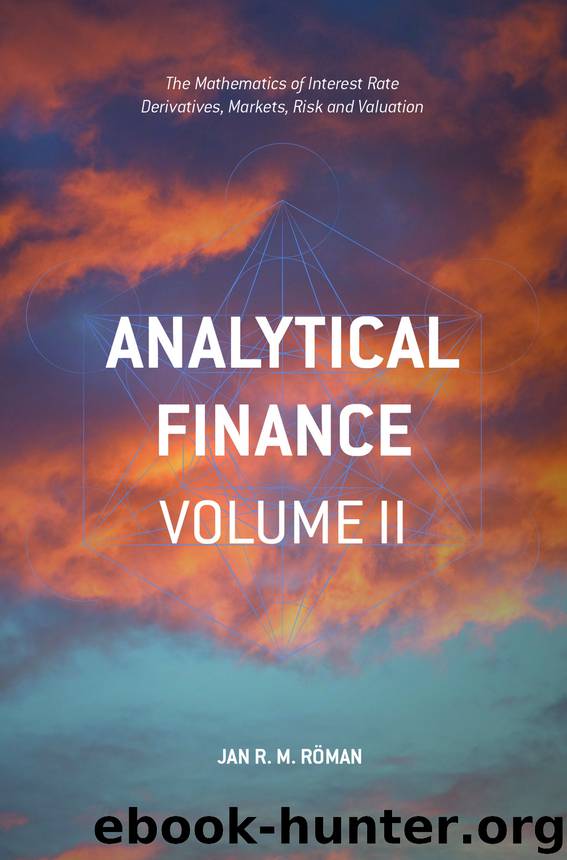Analytical Finance: Volume II by Jan R M Röman

Author:Jan R M Röman
Language: eng
Format: epub
Publisher: Springer International Publishing, Cham
Then we compute the daily standard deviation of yields
where is the mean value of X t and T the number of measurements (maturity). Some market practitioners argue that in forecasting volatility the expected value or mean that should be used in the formula for variance is zero.
Next, we annualize the standard deviation of yields
where D is the number of trading-days per year. Analysts can use different number of days in a year in this step, but the usual practice is to exclude holidays (∼ 10 days a year) from calculations, so that the number of trading days is holidays = 250 trading days.
How do we interpret yield volatility? Let us assume, for example, that the annualized interest rate volatility of a 5-year note is 10%. Further, let us assume that currently the yield on this note is 2%. The standard deviation of interest rates on this bond would then equal 10% x 2% = 0.2% (20 basis points). Having calculated this standard deviation, an analyst would be able to estimate the confidence interval for interest rates. For example, a 95% confidence interval can be estimated as .
Download
This site does not store any files on its server. We only index and link to content provided by other sites. Please contact the content providers to delete copyright contents if any and email us, we'll remove relevant links or contents immediately.
The Black Swan by Nassim Nicholas Taleb(6955)
Bad Blood by John Carreyrou(6483)
Pioneering Portfolio Management by David F. Swensen(6175)
Millionaire: The Philanderer, Gambler, and Duelist Who Invented Modern Finance by Janet Gleeson(4309)
Skin in the Game by Nassim Nicholas Taleb(4128)
The Money Culture by Michael Lewis(4033)
Bullshit Jobs by David Graeber(4003)
Skin in the Game: Hidden Asymmetries in Daily Life by Nassim Nicholas Taleb(3873)
The Wisdom of Finance by Mihir Desai(3616)
Blockchain Basics by Daniel Drescher(3435)
Liar's Poker by Michael Lewis(3330)
Fooled by Randomness: The Hidden Role of Chance in Life and in the Markets by Nassim Nicholas Taleb(2981)
The Intelligent Investor by Benjamin Graham Jason Zweig(2974)
Hands-On Machine Learning for Algorithmic Trading by Stefan Jansen(2971)
Mastering Bitcoin: Programming the Open Blockchain by Andreas M. Antonopoulos(2957)
Investing For Dummies by Eric Tyson(2842)
The Power of Broke by Daymond John(2839)
Market Wizards by Jack D. Schwager(2595)
Zero Hour by Harry S. Dent Jr. & Andrew Pancholi(2569)
